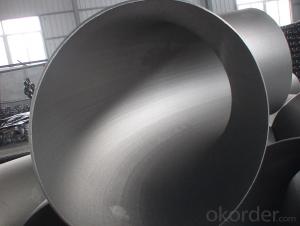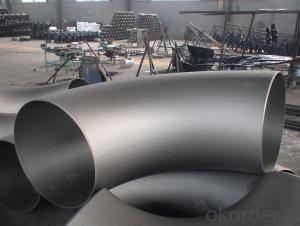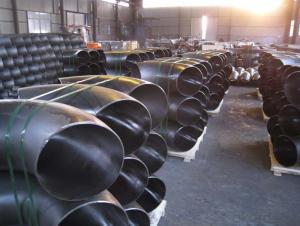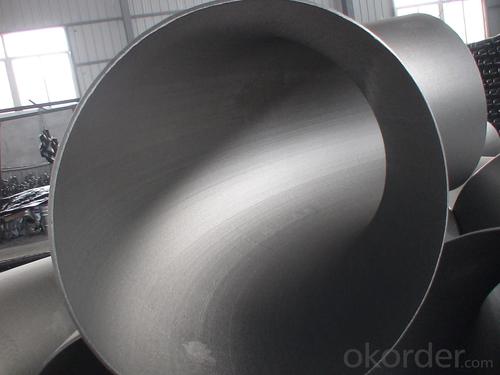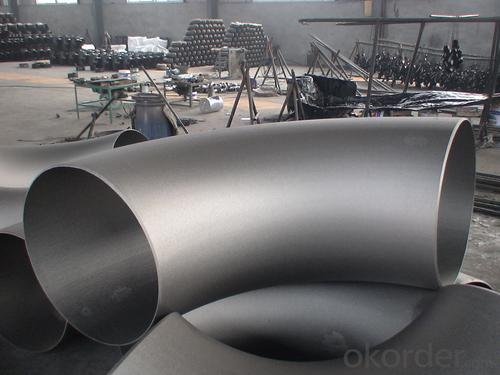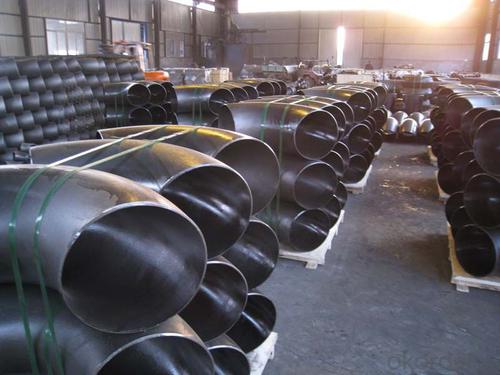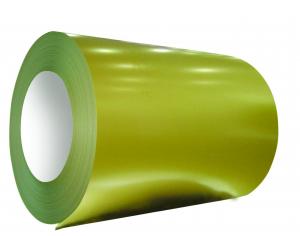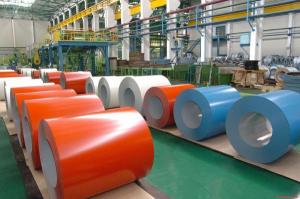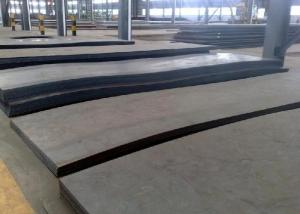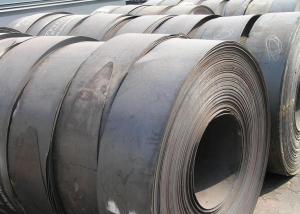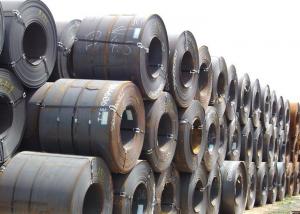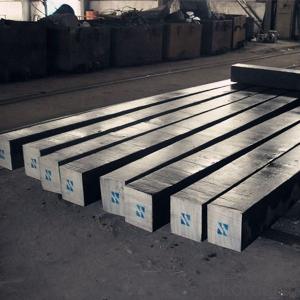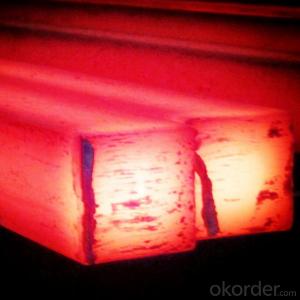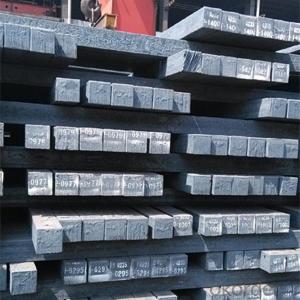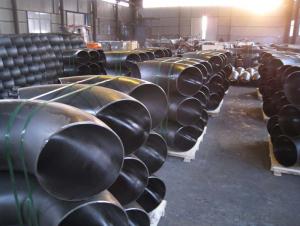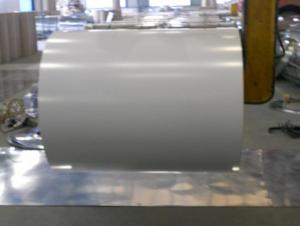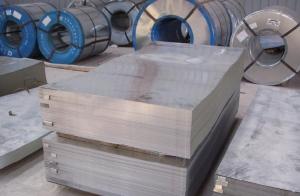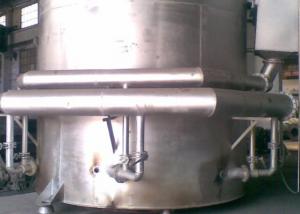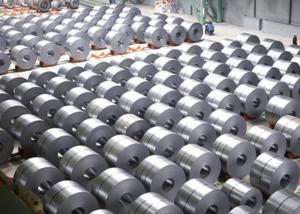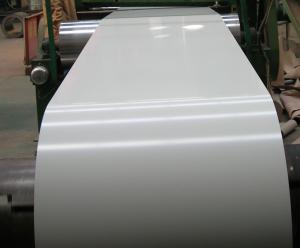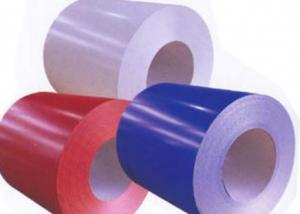Carbon steel pipe fittings ELBOW
- Loading Port:
- China Main Port
- Payment Terms:
- TT OR LC
- Min Order Qty:
- -
- Supply Capability:
- -
OKorder Service Pledge
OKorder Financial Service
You Might Also Like
Pipe fitting is the occupation of installing or repairing piping or tubing systems that convey liquid, gas, and occasionally solid materials. This work involves selecting and preparing pipe or tubing, joining it together by various means, and the location and repair of leaks.
Pipe fitting work is done in many different settings: HVAC, manufacturing, hydraulics, refineries, nuclear-poweredSupercarriers and Fast Attack Submarinescomputer chip fab plants, power plant construction and other steam systems. Pipe fitters (sometimes called simply "fitters") are represented in the USA and Canada by the United Association of Journeymen and Apprentices of the Plumbing and Pipe Fitting Industry of the United States and Canada.
Fitters work with a variety of pipe and tubing materials including several types of steel, copper, iron, aluminium, and plastic. Pipe fitting is not plumbing; the two are related but separate trades. Pipe fitters who specialize in fire prevention are called Sprinklerfitters, another related, but separate trade.
Materials, techniques, and usages vary from country to country as different nations have different standards to install pipe.
Elbow are an English alternative rock band consisting of Guy Garvey (vocals, guitar), Richard Jupp (drums, percussion), Craig Potter (keyboards, piano), Mark Potter (guitar, backing vocals), and Pete Turner (bass guitar, backing vocals). They have played together since 1990, adopting the Elbow band name in 1997, and have released six studio albums: Asleep in the Back (2001), Cast of Thousands (2003), Leaders of the Free World (2005), The Seldom Seen Kid (2008), Build a Rocket Boys! (2011), and The Take Off and Landing of Everything (2014). All of their studio albums, as well as B-sides compilation Dead in the Boot (2012), have placed in the top 15 of the British album chart and seven of their singles have placed in the top 40 of the British singles chart.
In 2008 Elbow won the Mercury Music Prize for their album The Seldom Seen Kid, and in 2009 they won the Brit Award for Best British Group In 2012 they released "First Steps", the BBC theme for the 2012 London Olympics
Specifications
Standard: ASTM A234 WPB, JIS, DIN, EN, GOST
Use for Oil, Gas, Subwatering act.
45/90/180 degree, LR/SR Elbow
ASTM A234 WPB ELBOW :
| ||||||||
| we are manufacturer for carbon steel pipe and fittings,like 45deg,90deg,180deg,L/R OR S/R,bend , | ||||||||
| equal or reducing tee, CON reducer, ECC reducer, pipe cap,flange. | ||||||||
| CON AND ECC REDUCER: CARBON STEEL,STAINLESS,STELL,ALLOY STEEL | ||||||||
| NOMINAL DIAMETER | BIG OD1 | SMALL OD2 | HEIGHT(MM) | |||||
| MM | SERIES A | SERIES B | SERIES A | SERIES B | 51-711 | |||
| 25*15--1500*1400 | 33.7-1524 | 32-1520 | 21.3-1420 | 18-1420 | ||||
| MATERIAL: A234WPB,A283,A105,A53,A106,API5L | ||||||||
| STANDARD: ASTM/ANSI,DIN,ISO,GB,JIS,BS ,GOST | ||||||||
| OTHERS: | ||||||||
| 1. Special design available according to requirement | ||||||||
| 2. All the production process are made under the ISO 9001:2000 strictly. | ||||||||
- Q: What are the applications of steel angles?
- Steel angles have a wide range of applications in various industries. They are commonly used in construction for structural framing, providing support and stability to buildings. Steel angles are also used in the manufacturing of machinery, equipment, and vehicles, where their strength and durability are crucial. Additionally, they find application in the fabrication of infrastructure such as bridges, walkways, and platforms. The versatility of steel angles makes them valuable in many other applications, including shelving, fencing, and reinforcing concrete structures.
- Q: What are the different types of steel bars?
- There are several different types of steel bars, including mild steel bars, deformed steel bars, high tensile steel bars, stainless steel bars, and alloy steel bars. Each type of steel bar has its own unique properties and uses in various industries and applications.
- Q: What are the uses of steel in the construction of schools and universities?
- Steel is widely used in the construction of schools and universities due to its strength, durability, and versatility. It is used in various structural components such as beams, columns, and frames, providing a sturdy and safe infrastructure. Additionally, steel allows for large open spaces and flexible floor plans, accommodating different educational needs and future expansions. Its fire-resistant properties also enhance the overall safety of the buildings.
- Q: What is the importance of steel reinforcement in concrete structures?
- The steel reinforcement in concrete structures is crucial because it enhances the strength and durability of the concrete. It helps to resist tensile forces that concrete alone cannot withstand, such as bending, cracking, and stretching. Steel reinforcement also improves the overall structural integrity of the concrete, ensuring that it can withstand heavy loads and external pressures. Additionally, it helps to prevent potential structural failures and increases the lifespan of the concrete structure.
- Q: What are the different types of steel rails and their applications in the railway industry?
- There are several types of steel rails used in the railway industry, including the following: 1. Light rails: These are commonly used in light-duty applications such as trams and light rail transit systems. 2. Heavy rails: These are used in mainline railways and high-speed tracks where heavy loads and high traffic volumes are expected. 3. Crane rails: These are specifically designed to withstand the heavy loads and constant movement of cranes in industrial settings, such as ports and construction sites. 4. Grooved rails: These rails have grooves or flanges on their surface to provide guidance for tram or train wheels, making them suitable for urban and suburban rail systems. 5. Guard rails: These are installed along the edges of railway tracks to prevent derailment and provide additional safety measures. 6. Switches and crossings: These specialized rail types are used at junctions, switches, and crossings to allow trains to change tracks safely. Each type of steel rail serves a specific purpose within the railway industry, ensuring efficient and safe transportation of passengers and goods.
- Q: How do steel products contribute to the mining and excavation industry?
- Steel products play a crucial role in the mining and excavation industry by providing essential equipment and infrastructure. From drill bits and cutting tools to conveyor belts and structural support systems, steel products are used extensively in various mining operations. The strength, durability, and resistance to corrosion of steel make it ideal for withstanding the demanding conditions encountered in mines and excavation sites. Additionally, steel is also used to manufacture machinery and vehicles needed for mining activities, such as excavators, bulldozers, and trucks. Overall, steel products are essential for the efficiency and safety of mining and excavation operations.
- Q: What are the applications of steel gratings?
- Steel gratings have a wide range of applications due to their durability, strength, and versatility. They are commonly used in industrial settings as platforms, walkways, and stair treads, providing a safe and secure surface for workers. Steel gratings also find application in the construction industry as structural components, allowing for efficient drainage and ventilation. Additionally, they are utilized in transportation infrastructure, such as bridges and highways, to enhance safety and prevent accidents.
- Q: What are the different types of steel scaffolding and support systems available?
- There are several types of steel scaffolding and support systems available, including traditional tube and clamp scaffolding, system scaffolding, frame scaffolding, and mobile scaffolding. Each type has its own advantages and is suited for different applications. Traditional tube and clamp scaffolding is versatile and can be customized to fit any structure, while system scaffolding offers pre-designed components for faster assembly. Frame scaffolding is commonly used in construction projects, and mobile scaffolding is portable and ideal for smaller tasks or maintenance work.
- Q: How is steel used in the production of industrial boilers and pressure vessels?
- Steel is used in the production of industrial boilers and pressure vessels due to its high strength and durability. It provides a sturdy framework that can withstand high temperatures and pressures, ensuring the safety and efficiency of these equipment. Steel is also easily weldable, allowing for complex designs and customization in the manufacturing process. Additionally, its resistance to corrosion makes it a suitable material for handling various substances and prolongs the lifespan of the boilers and pressure vessels.
- Q: How is steel tubing manufactured?
- Steel tubing is manufactured through a process called tube making, which involves several steps. Initially, a solid steel billet is heated and pierced to form a hollow tube. This tube is then elongated and reduced in diameter using a series of rollers, resulting in a thin-walled tube. Further processing, such as straightening, cutting, and bending, may be done to achieve the desired shape and dimensions. The final product is then subjected to various finishing treatments, including heat treatment, coating, and inspection, to ensure its quality and durability.
Send your message to us
Carbon steel pipe fittings ELBOW
- Loading Port:
- China Main Port
- Payment Terms:
- TT OR LC
- Min Order Qty:
- -
- Supply Capability:
- -
OKorder Service Pledge
OKorder Financial Service
Similar products
Hot products
Hot Searches
Related keywords
